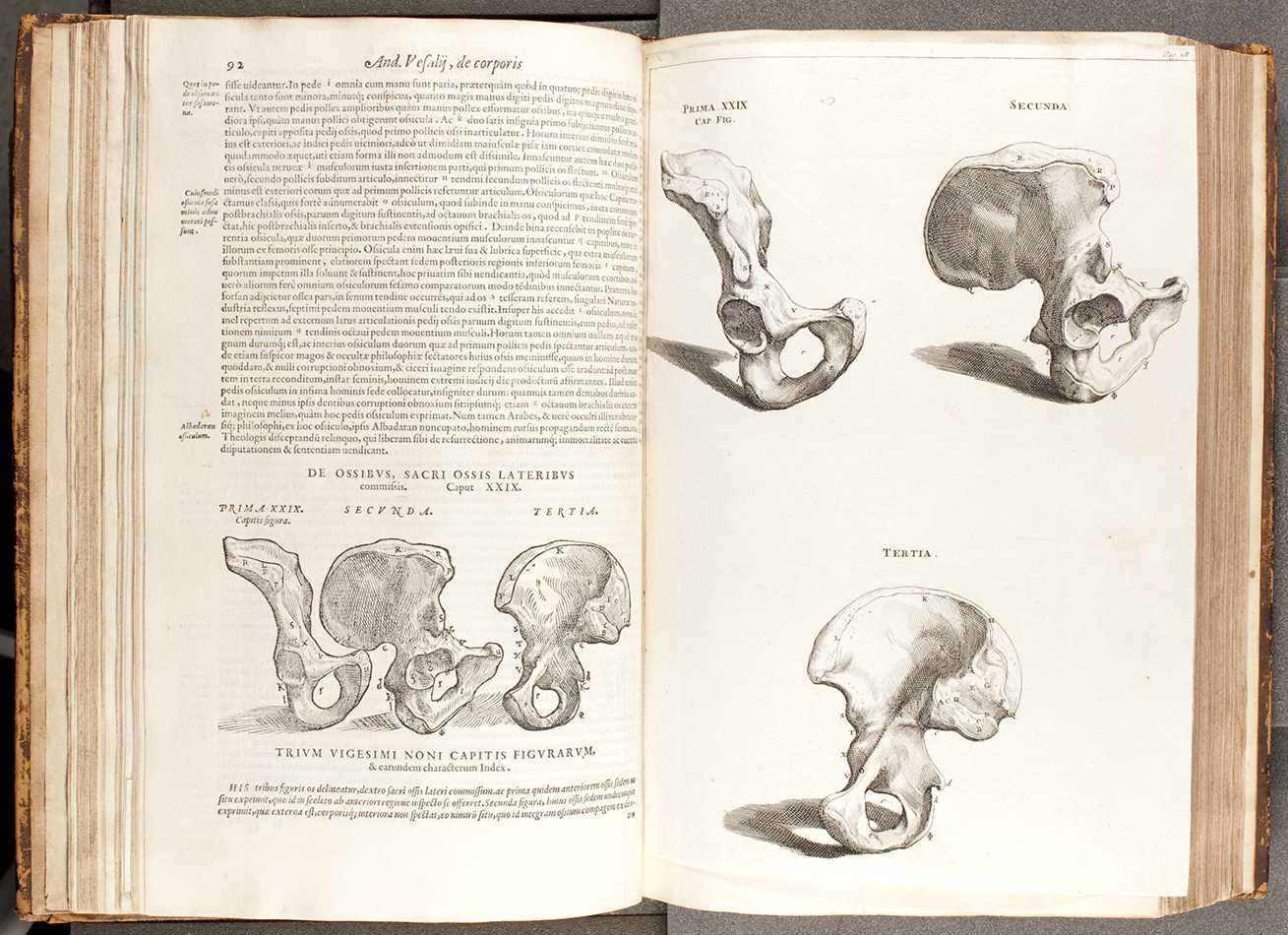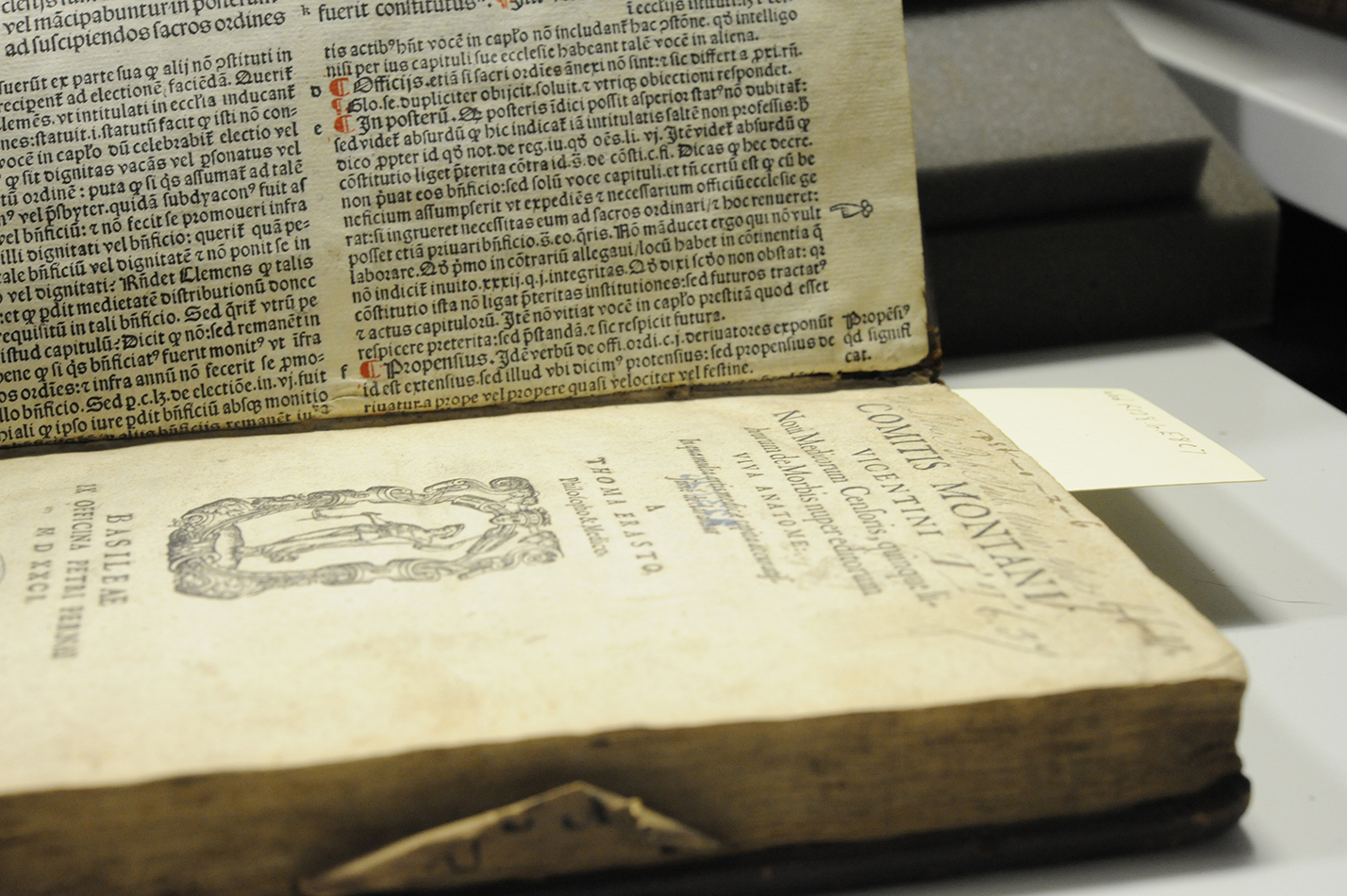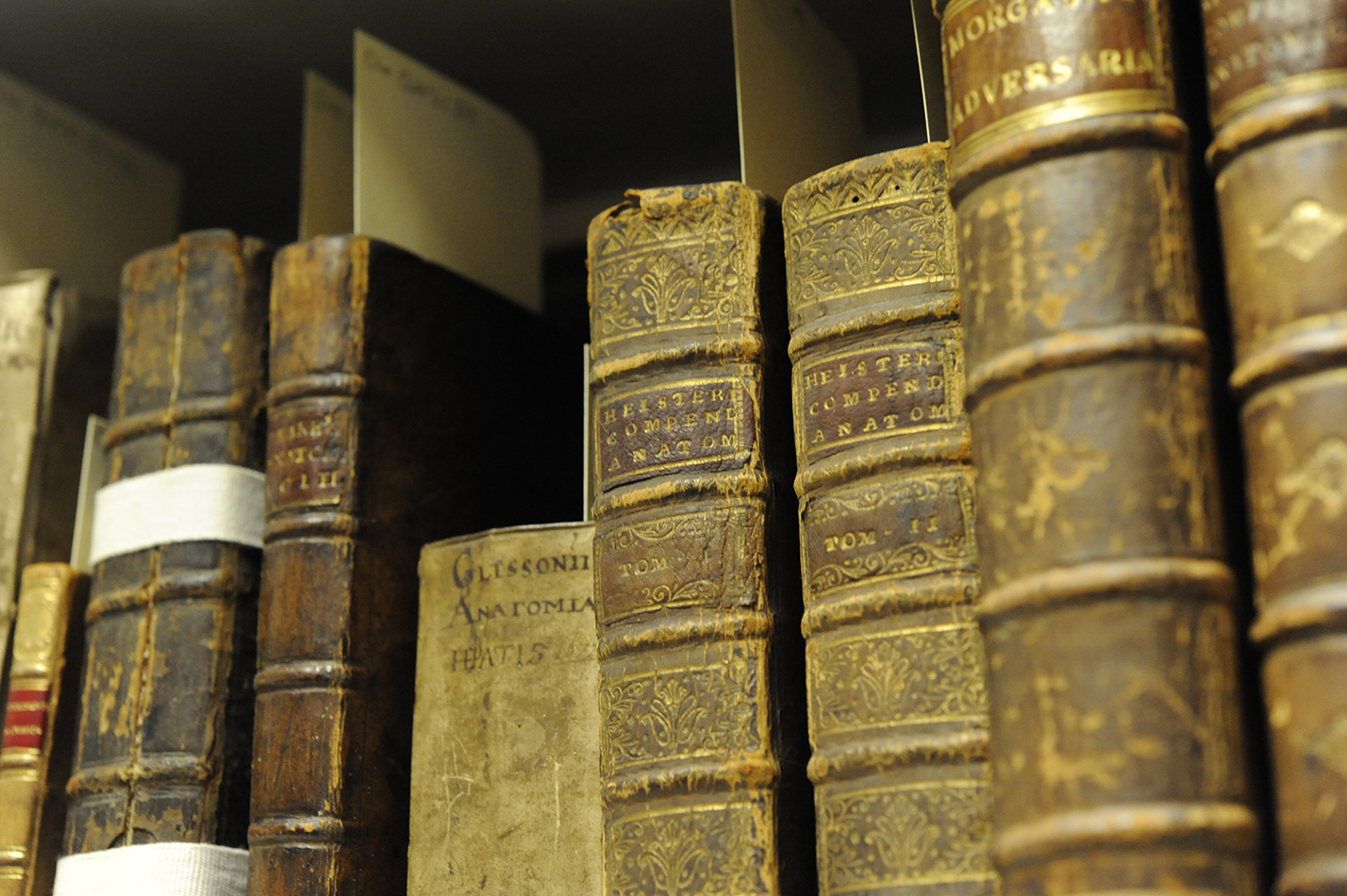Wedderburn and Simson Collections now on SAULCAT
Special Collections is pleased to announce that the cataloguing of two of its rare book collections is complete. Both the Simson Collection and the Wedderburn Collection are now accessible via SAULCAT, making them the first collections to have been completed under Cataloguing the World, an externally-funded project to catalogue historic scientific collections at the University of St Andrews.
Both the Simson and Wedderburn collections focus on medicine, and contain significant holdings from the 16th through 18th centuries.
The Simson Collection was the working library of James Simson (1740-1770), 2nd Chandos Professor of Medicine at St Andrews, and was bequeathed to the Library in 1770. It includes many items previously owned by his father Thomas Simson (1696-1764), the 1st Chandos Professor. There are over 200 volumes of medical books, including a coloured copy of Dioscorides, De Medicinali Materia, Frankfurt, 1549 and a copy of Vesalius’, De Humani Corporis Fabrica Libri Septem (“On the fabric of the human body in seven books”), published in Venice in 1568.

Vesalius’ work is a landmark medical text which corrected many of the errors in earlier medical authorities like Galen, and whose detailed illustrations were far superior to those of earlier anatomical texts. The library’s copy was featured in 600 years of book collecting, and is noteworthy not because the 1568 edition is particularly fine, but rather quite the contrary. The intricate, large-scale engravings that made Vesalius’ work such a landmark text were in this edition reproduced as smaller, less detailed woodcuts. To improve its usefulness as a teaching aid, however, the Simsons cut out many of the more detailed engraved illustrations from the more expensive 1725 edition and glued them into the earlier printing.
![The Simson Collection copy of Leonhard Fuchs' Primi de stirpium historia co[m]mentariorum tomi (Sim QK41.F8B49) contains specimens of some of the plants pictured in the book, like this cutting of chamomile.](https://special-collections.wp.st-andrews.ac.uk/files/2015/08/botanical_specimen_1.jpg?w=283)
Until now, the Simson Collection was only accessible via the printed Guardbook catalogue (or pagecat) or by consultation with Special Collections staff. Now, the entire collection has been fully catalogued in SAULCAT and is able to be requested for use in our reading room.

The Wedderburn collection was a bequest, made in 1679 to St Leonard’s College in the University of St Andrew, by Sir John Wedderburn (1599-1679), sometime regent of that college and physician to Charles I. The collection consists of 136 volumes, including 7 incunabula, and medical books of the 15th-17th centuries. The Wedderburn collection is of interest for its many noteworthy titles from the history of medicine, and the bindings are also significant. About a dozen of the volumes contain fragments of manuscripts dating from the 13th through 17th centuries within their bindings, with several more containing fragments of printed texts. In addition, more than two dozen of the volumes have armorial bindings bearing a distinctive crest of three Cornish choughs, associated with the Gwynn family.
Although the majority of the Wedderburn collection was previously accessible via SAULCAT, the records were created according to outdated cataloguing rules, making them more difficult to retrieve in author, title, and subject searches. Now the catalogue records include full title page transcriptions, standardised name and subject headings, and descriptions of binding and provenance evidence. Standardised headings may not sound terribly exciting, but they’re particularly important when names appear in Latin or other languages with different spellings and inflected endings, which can throw off a keyword search. Our holdings of 16th to 18th century British books have also been reported to the ESTC, making it easier for researchers to find out who owns a copy of a particular work without needing to search hundreds and thousands of individual catalogues. And to our own advantage, this cataloguing project has allowed us to record detailed notes about the physical condition and preservation needs of this area of our rare book collection.
-Christine Megowan
Rare Books Cataloguer
